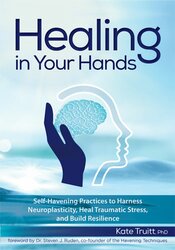Practicing the Art of Reflective Listening
Dr. Kate Truitt provides a step-by-step strategy (and FREE worksheet!) to teach clients the art of reflective listening

I couldn’t help but chuckle, to which she responded with a loud groan.
“I know it sounds funny,” she said, sobering up, “but it’s really hard. I really love Theo. But how can we have a marriage if we’re not even able to communicate? It feels like complete crazy-making whenever I try to express how I’m feeling—or even more specifically, when I’m feeling hurt.”
I nodded my head empathetically. “Donna, how much do you remember about what Theo is sharing with you during those same conversations?”
I watched as a series of emotions flashed across her face: confusion followed quickly by dismay.
“Uh…” I could almost see her neurons anxiously trying to unearth data that simply wasn’t available and coming up blank. “I don’t really remember anything—just him trying to ‘fix me’ and how frustrating it was!”
Donna certainly wasn’t alone in this experience. Especially in difficult moments, communication can be almost impossible. When this occurs, reflective listening provides a new opportunity for clients to reconnect and reopen the lines of communication with others in their lives. It’s all about getting the “I” out of the way in the conversation. That is, the client must stop focusing on trying to get their point across and instead shift their entire focus to the person they are listening to.
So often, our clients will relay difficult conversations they’ve had—and they may mention that they were inside their own heads thinking of their next counterresponses. But in doing so, they’re not actually listening to the other person. Since our brains love to be right, we often fill in the gaps with what we think the other person said (or even with what we want them to have said, to confirm our own thoughts) and we completely miss the real conversation. It’s easy to see how miscommunications and missed communications happen so easily.
With reflective listening, guide your clients to simply listen to what someone else has to say. After taking this in, they should reflect back, or paraphrase, what the other person said to make sure that they are understanding them correctly. Share these basic steps with your clients:
- Make sure you’re in a head space where you can focus all of your attention on the person you want to listen to.
- Once the other person shares information with you, reflect back what they said using this three-pronged approach:
- Use an opening statement (i.e., “It seems like,” “What I heard you say is,” “It sounds like”)
- Restate their feelings (i.e., “you were feeling mad,” “you didn’t appreciate it,” “you were confused”)
- Summarize the situation (i.e., “about ___,” “when ___,” because ___”)
- Ask the person if what you reflected back is an accurate reflection of what they were trying to communicate.
- If yes, great! If not, ask them to tell you what you missed or what they would like you to additionally understand.
- When you can correctly reflect back what they said, you are listening effectively!
When clients use these steps, they want to make sure to reflect back what the other person actually says—not insert their thoughts or judgments about what someone else said. For example, let’s return to Donna’s example and imagine that her husband, Theo, is feeling bad about their earlier interaction. To her surprise, he circles back to find out what went off track between the two of them.
Theo begins by saying, “Earlier it seemed like you were frustrated that I wasn’t listening when you said your feelings were hurt. Is that what you were trying to tell me?”
“Yes, but that’s only half of it,” Donna replies.
“Can you explain to me the part I missed?” Theo asks.
“You immediately jumped in and tried to rectify the situation, when all I was trying to do was make you aware that my feelings were hurt and why I felt that way.”
After hearing what Donna has to say, Theo summarizes his understanding again: “I think I get it now. What I hear you saying is that you didn’t want me to fix how you were feeling—you just wanted me to understand why you got there. Is that right?”
How do you imagine Donna might feel after hearing Theo reflect this information back to her?
Reflective listening is so powerful because it feels good to be seen and heard. This is one of our most fundamental desires as humans. Use the following free worksheet to help your clients improve their reflective listening skills.
Find this worksheet and many more in my new book, Healing in Your Hands: Self-Havening Practices to Harness Neuroplasticity, Heal Traumatic Stress, and Build Resilience. It weaves together powerful client stories, insights from the field of neuroscience, and personalized havening practices to create a complete self-healing program that anyone can use.

Written by Dr. Kate Truitt, a psychologist, neuroscientist, and trauma expert, Healing in Your Hands is the first book of its kind to integrate the neuroscience of trauma with cutting-edge research on self-havening – a groundbreaking technique that draws on the power of mindful touch to heal even the most profound traumatic stress. It weaves together powerful client stories, insights from the field of neuroscience, and personalized havening practices to create a complete self-healing program that anyone can use.
Kate Truitt, PhD, MBA is a licensed clinical psychologist, applied neuroscientist, and internationally recognized expert in the neuroscience of trauma, stress, and resilience. She is regularly sought out as a contributor for global media outlets ranging from Oprah and Medium to the to the BBC and Today. Dr. Kate is an international trainer and has spoken at the United Nations, the United States Department of Defense, and PESI, among others. She has dedicated her life to advancing the treatment of trauma and stress-related disorders, eliminating the stigma surrounding mental health, and empowering wellness through the dissemination of psychoeducation and self-healing tools through her speaking engagements, books, blog, and social media presence.
Learn more about her educational products, including upcoming live seminars, by clicking here.



